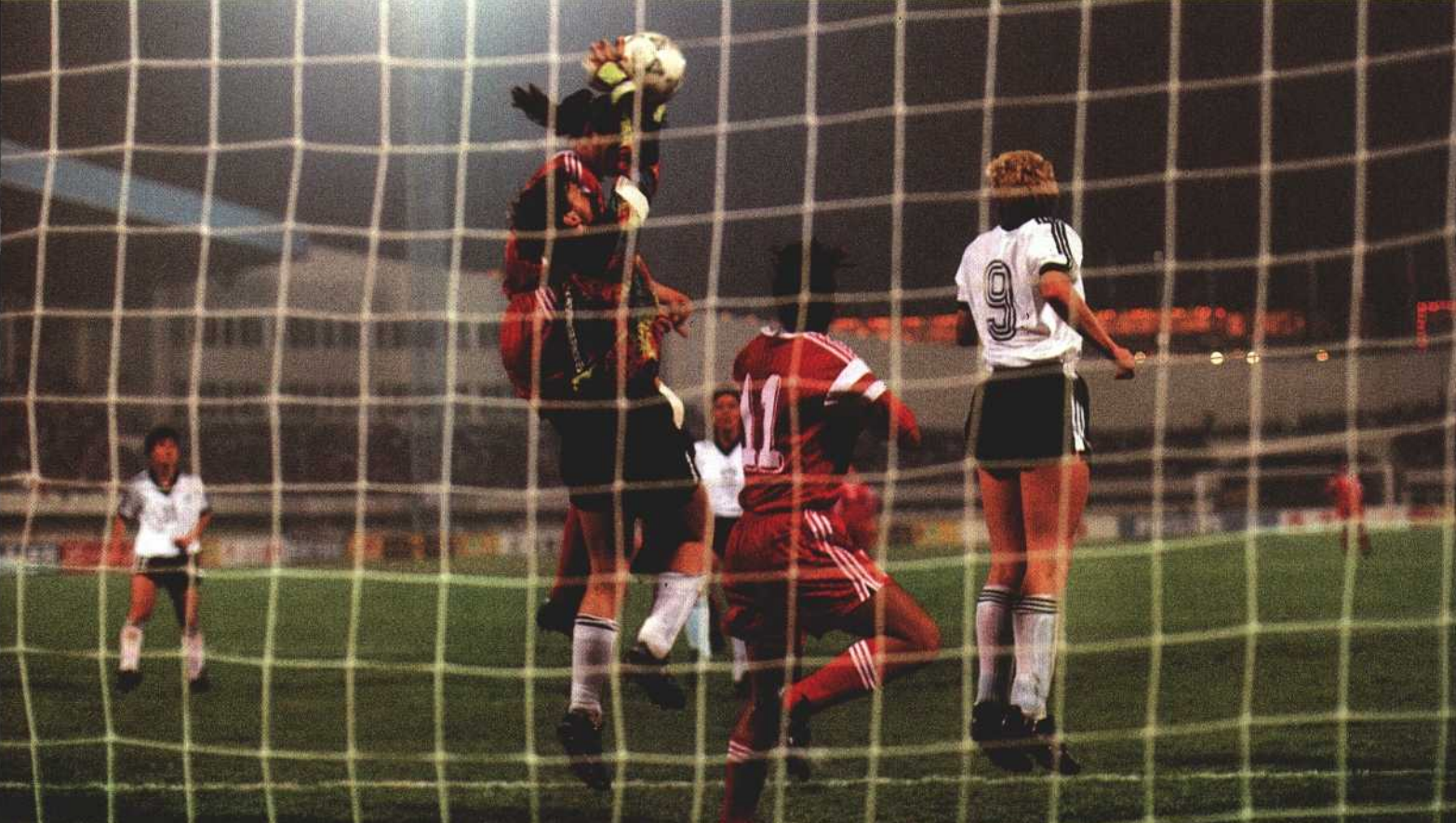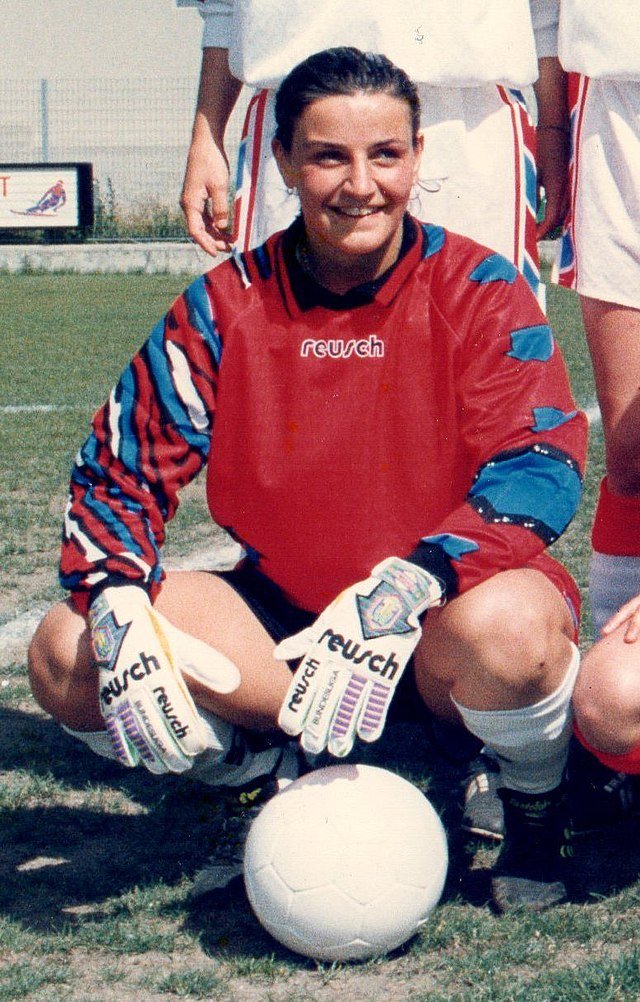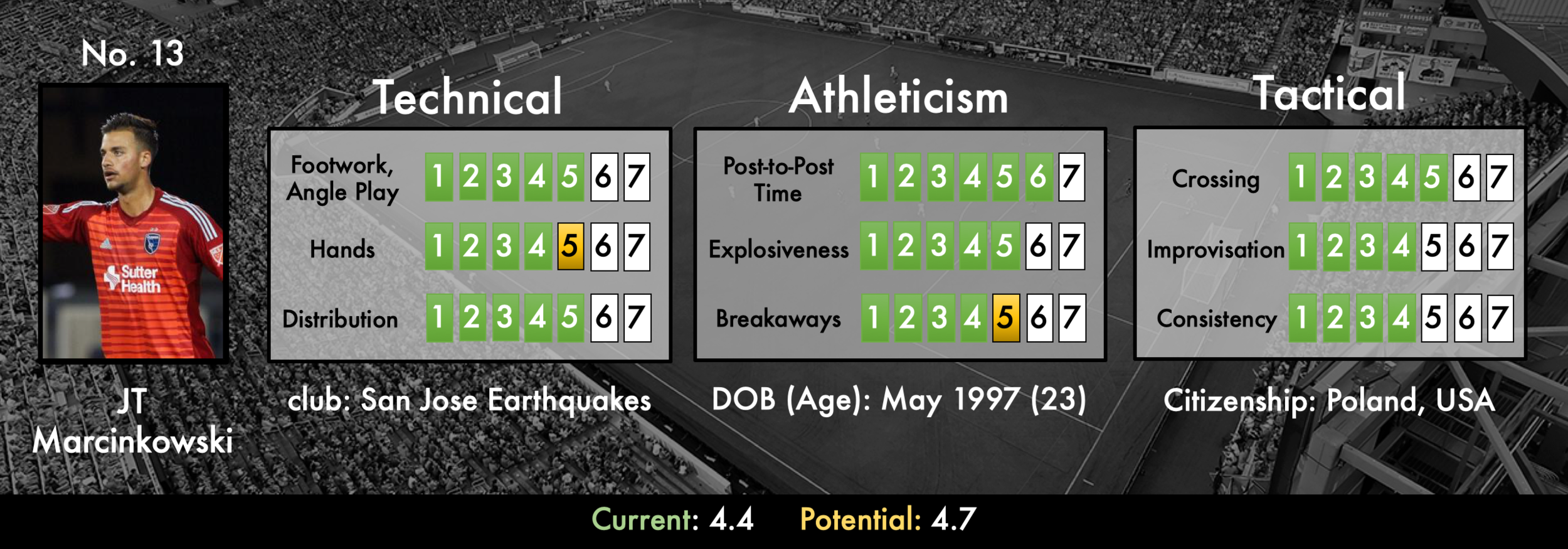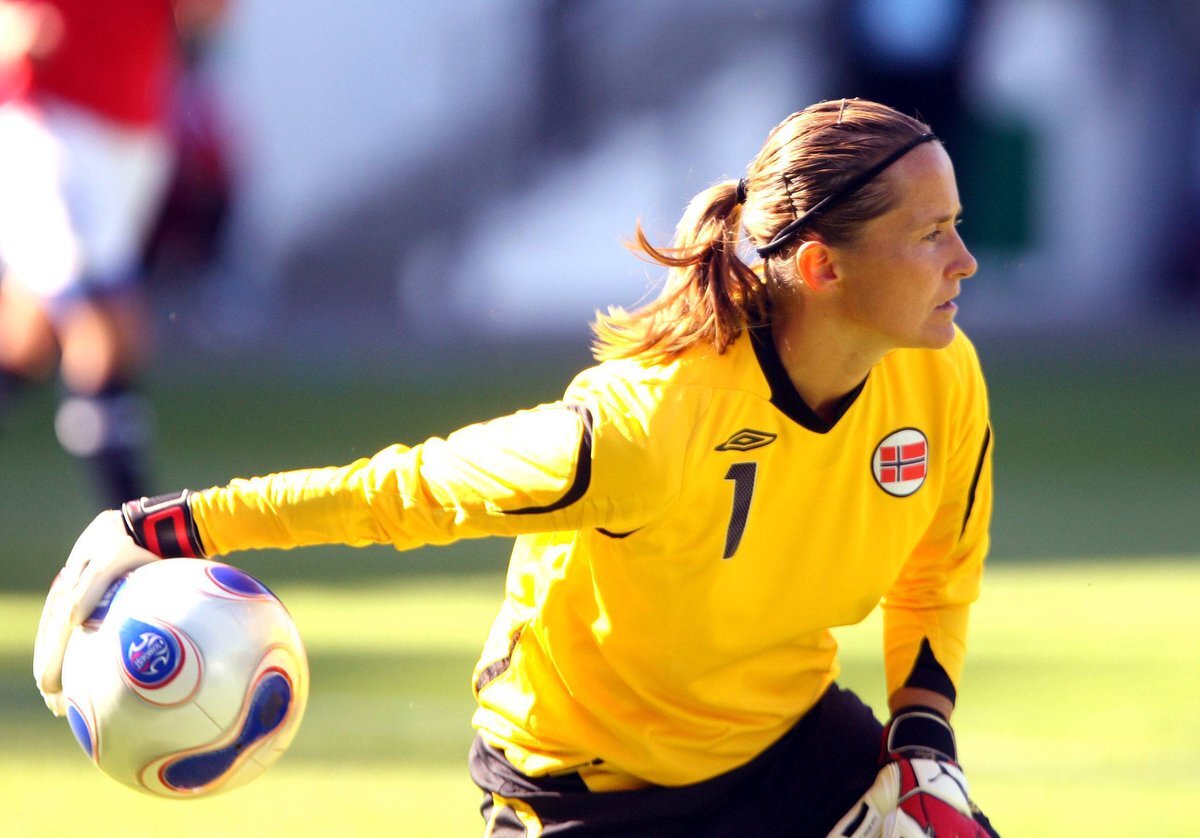To see the full list of goalkeepers in the Hall of Fame or read more about Weighted Cap Totals (WCT), click here.
2000 - Leslie King (New Zealand, 28 caps / 115 WCT) - King’s career can best be summed up as a perennial athlete. Originally playing softball at Cal State Fullerton, King played shortstop for the New Zealand national softball team for 14 years, earning admittance into the New Zealand Softball Hall of Fame in 2017. The dual-sport athlete first suited up for the New Zealand football team in 1987 and proceeded to play every match until 1994, a total of 28 appearances.
The Football Ferns were a formidable team throughout the 1980s, topping the US, Canada, and Australia in the 1987 World Invitational. In 1991, New Zealand qualified for the World Cup, where King was praised for her goalkeeping, despite the team’s scoring woes. FIFA’s technical report commended King, who “showed great talent with innumerable saves.” In 1993, New Zealand traveled to the US for a second-place finish in the CONCACAF Invitational Tournament before missing out on the 1995 World Cup due to goal differential, whereafter King retired from international play. King’s career is highlighted by her performance in the 1991 World Cup, where she was named captain of the squad and praised as the world’s best goalkeeper by her teammates.
Pioresan and the Brazilian national team before a friendly match against Canada, July 4th, 1996. (From A Tarde)
2001 - Margarete “Meg” Pioresan (Brazil) - Margarete “Meg” Pioresan’s arrival to the Brazilian national football team was delayed due to her success with the national handball team, where she won a the bronze medal team at the 1987 Pan-American Games. Although she was playing football in the early 80s, she quit football altogether in 1985 and even rejected a roster spot for the 1988 FIFA Women's Invitation Tournament in favor of pursuing handball. After her retirement from handball in 1989, she returned to the field to focus her efforts on the national football team. In 1991, at 35 years old, Pioresan and Brazil breezed through qualifying to represent South American in the 1991 World Cup. Although the Brazilians were thoroughly defeated by the US in a 5-0 loss, Pioresan’s athleticism and bravery were still apparent even at such a late stage in her career. Pioresan continued on as the national team’s starting goalkeeper for the 1995 World Cup and 1996 Olympics, the latter tournament featuring the Brazilians’ first top-four finish, losing to China 3-2 in the semifinal.
Pioresan won the Taça Brasil de Futebol Feminino (Brazil’s annual tournament) multiple times with EC Radar and CR Vasco da Gama (likely around 5 although the exact number is unknown) and was capped by the national team at least 20 times, if not more. Pioresan retired in 2000, at the age of 44. In 2016, Pioresan was named as the best Brazilian goalkeeper in the team’s 30-year history by Trivela.
Sogliani featured with the Italian National Team, 1982 (Wikipedia)
2002 - Daniela Sogliani (Italy, 27 caps / 71 WCT) - Sogliani was a modern rival to fellow Italian goalkeeper Wilma Seghetti. Although a little shorter than Seghetti, Sogliani remained relevant on both the domestic and international scene for over a decade. Sogliani won the league and Italian Cup with AC Milan in 1975 before becoming Serie A champions three years in a row with Alaska Gelati Lecce (1981-1983), as well as two league cups. With the Italian national team, Sogliani debuted in 1971 and received her last cap in 1982. Most notably, Sogliani was in goal for Italy’s 1971 World Cup run. Although she was only 17, Italy drew eventual champions 1-1 in group play before a surprising loss to Mexico in the semifinals resulted in a third-place finish. Despite the disappointing finish in 1971, Sogliani’s decade long relevancy and longevity was matched by few goalkeepers throughout the 1970s.
Brenzan in 2001 (Getty).
2003 - Giorgia Brenzan (Italy, 111 caps / 168 WCT) - Brenzan’s time with the Italian National Football team stretched from 1982 to 2002, becoming one of the most dominant goalkeepers in the 1990s. Legendary Italian striker, Carolina Morace, bragged of Brenzan’s skills, saying the “whole world envied us” for having Brenzan in goal. In 1991, Brenzan made her first appearance in the European Championship, earning a fourth-place finish with Le Azzurre. Brenzan returned in 1993 and 1997, losing to Norway (1-0) and Germany (2-0) in close defeats, respectively. At the 1999 World Cup, Italy ended up in the Group of Death with Germany, Brazil, and Mexico in the group stage. Brenzan had a respectable run, seeing Italy finish with four points (including a tie against Germany) and conceding only three goals over the three matches.
Brenzan’s international success was not to be outdone by her crowded trophy cabinet from her time in the Serie A. After being a top-half club for the first third of the decade, Brenzan and Torres FO.S. won their first Serie A title in 1994. In 1998 she left Torres for AC Milan, where she won a title in her first year with the club. Brenzan won four Italian Cups (1986, 1988, 1991, 1995), two Italian Super Cups (1998, 1999), and was named the league’s best goalkeeper for four years straight around the turn of the century (exact dates are unknown). From 1990 through 2001, Brenzan’s clubs maintained a .82 goals allowed average, largely due to having one of the world’s best goalkeepers in goal.
2004 - Gao Hong (China) - Gao Hong played for the Chinese national football team from around 1995 to 2000. While Gao’s exact cap count is unknown, she likely had around 110 caps (114 WCT) with the national team. (Hong is listed with 62 caps during coverage of the 1999 semifinal match against Norway.) Although Gao is typically known for the goalkeeper who lost in penalties in the 1999 World Cup Final, Gao was not unfamiliar with the pressure of a shootout. In the semifinal match during the 1995 World Cup, Gao saved two penalties against Sweden, helping China rebound from a disappointing 1991 World Cup to a fourth-place finish in 1995. (Watch the penalty saves here.) A year later, China drew the US 0-0 at the 1996 Olympics, before losing a close 2-1 match for the gold medal a week later. Between the 1995 and 1997 AFC Championships, China conceded one goal and won ten straight matches with Gao in goal. The 1999 edition of the Algarve Cup finished with China as champions, winning 2-1 over the US in the final. At the 2000 Olympics, China would not move past a very difficult group, tying the US 1-1 (where she saved a penalty to maintain the tie) then losing to eventual champions Norway 2-1 on a late goal, ending their shot at the knockout round. After 2000, Gao retired from international play and focused solely on her final years in the WUSA, playing two seasons for the New York Power and reaching the semifinals in 2001.
Similar to Brazil in the first part of the 21st century, China’s lack of trophies doesn’t mean they weren’t on the cusp of winning multiple tournaments around the turn of the century, largely due to their stellar goalkeeping in Gao Hong. Her aggressive play style and bravery off her line could be difficult for her American teammates when playing for the Power, and her scrambling methodology propped China up as an elite side, one that the team hasn’t been able to replicate since Gao’s retirement.
2005 - Pauline Cope (England, 60 caps / 114 WCT) - Once hailed by England manager Ted Copeland as “the best female goalkeeper in the world”, Cope was a mainstay with the English national team from 1995 to 2004. Cope was featured in goal during England’s first World Cup appearance (1995) and England’s semifinal finish in the 1995 Euro. Although the national team struggled with relevancy for the next decade, Cope’s standard of goalkeeping regularly helped England avoid “hideous embarrassment”, as such in the defeats to Norway and Germany in the 1995 World Cup.
Cope’s domestic career featured alternating stints with Arsenal and Millwall, where she amassed 11 trophies from the Premier League National Division (England’s top league), the FA Cup, and the League Cup. In 2004, Cope retired, citing that she “wasn't enjoying it as much as in the past” In 2008 she was inducted into the English Football Hall of Fame, where she praised by former teammate and then-current English manager Hope Powell as “a tremendous presence in goal for England. She had no fear, which is a great attribute, but there was more to her goalkeeping than courage. She also had great ability in terms of positioning and shot-stopping. As a character in the dressing room, she was very competitive, and she had a huge influence on the side.”
2006 - Svetlana Petko (Russia, 144 caps / 199 WCT) - For a decade and a half, Petko oversaw the peak years in Russian football. Petko was in goal for the 1999 World Cup, where Russia advanced from the group stage with surprise drubbings over Japan and Canada. Petko followed up the historic finish - one that has not been topped to date - with a 7th place finish at the 2001 Euro. In 2002, Russia climbed to be a top ten team in the world. Their golden age of football would span from 1999 to 2005, before stumbling back down the rankings.
In the Russian Football Championship, Petko retired as a decorated player. Petko won the league with Interros Moscow (1992) and CSK VVS Samara (1994, 1996, and 2001), along with five more top-three finishes. Petko won the Russian Cup twice (Interros Moscow, 1992 and CSK VVS Samara, 1994) and reached the final in 1995 and 1996 as well. In 2003, CSK VVS Samara made it to the UEFA Champions League quarterfinal before losing to Arsenal.
In 2013, Petko was named to the 25th-anniversary team for the Russian national team. Petko holds the record for most caps received with 144 appearances.
2007 - Stefania Antonini (Italy, 32 caps / 44 WCT) - Combined with fellow Italian goalkeeper Eva Russo’s suspension and winning the Serie A league title with Reggiana Zambelli in the spring of 1990, Stefania Antonini made her first appearance with the national team at 20 years old. Over the course of the next year, Antonini was in goal for Italy’s sixth-place finish at the 1991 World Cup, losing to eventual runner-ups, Norway, in a 3-2 extra-time loss. Antonini was featured in and out of the national team for five years as well as all of the three Euro campaigns in 1991, 1993, and 1995, although she split appearances with Giorgia Brenzan. Despite struggling to find a consistent club environment, Antonini won five Serie A titles (1990, 1991, 1993, 1997, 1998) and three Italian Cups (1992, 1993, 1994).
Antonini’s career was cut short, not for injury but by her own hand. After the 1998-99 season, Antonini hadn’t been called into the national team since 1996 and was frustrated at the lack of stability in the Serie A. After playing for four different clubs in six years, Antonini announced her retirement at the age of 29. The Dizionario del Calcio Italiano describes Antonini as a “rare talent… capable of making extraordinary acrobatic saves” and teammate Carolina Morace praised Antonini in 1990, saying, “she is only twenty years old but leads the defense with the determination and authority of the champion.” (translated from Italian, May 1990)
2008 - Marleen Wissink (Netherlands, 141 caps / 230 WCT) - For almost 20 years, Wissink was nearly the only goalkeeper featured for the Dutch national team. Although the Netherlands struggled to reach any serious notoriety, the back half of the 90s saw some positive moments. In 1996, the Netherlands earned a 3-1 victory of the US and followed it up with surprising wins over Russia and the Czech Republic in the 1997 Euro qualifying. The next year, the Netherlands had a respectable showing in the qualifying process for the 1999 World Cup, even pulling out a shocking 1-0 win over Germany. Although the Dutch struggled to find a consistent stream of goals, their defensive prowess in Wissink always kept games close. Over the course of seven years (1994-2000), the Netherlands only lost by more than one goal twelve times, despite not qualifying for a major tournament until 2009.
While Wissink’s international accolades were fairly limited, to say she excelled on the club scene is an understatement. Through her decade long tenure with 1.FFC Frankfurt, Wissink won the German Cup five times (1999-03), the Bundesliga another five times (1999, 2001-03, 2005), and the UEFA Women’s Cup twice (2002 and 2006). In a time when fielding a foreign goalkeeper was rare, Wissink’s run with a dominant German team stands out as an impressive achievement.
2009 - Silke Rottenberg (Germany, 125 caps / 124 WCT) - Rottenberg enters the Hall of Fame as one of the most decorated goalkeepers of all-time. On the heels of her winning her first Bundesliga title in 1992 (the other four coming in 94, 96, 07, 08), Rottenberg received her first start with the national team in 1993. Four years later, Germany won the 1997 Euro with Rottenberg at the helm, conceding only one goal over the five games and shutting out Italy 2-0 in the final. At the 1999 World Cup, Germany struggled to match the success, finishing 8th after a 3-2 loss to the USA. However, Germany would capture revenge four years later, topping the United States at the 2003 World Cup in-route to Germany’s first of two World Cup titles. Rottenberg was slated to start at the 2007 World Cup, which Germany also won, before a cruciate ligament tear would sideline her in favor of a young Nadine Angerer.
Over the course of a two-decade professional career, Rottenberg won the World Cup (2003), the Euro three times (1997, 2001, 2005), the Champions League (2008), the Bundesliga five times (1992, 1994, 1996, 2007, 2008), the German Cup (1991, 1993) as well as two bronze finishes at the Olympics (2000, 2004) and the second-ever women’s treble (2008). Rottenberg’s relevancy in both club and international play has rarely been matched, before or since.
Click here to return to the main page for the complete list of goalkeepers


















































